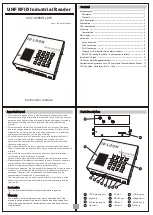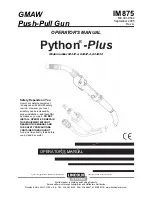
Measure the distance between the outermost rungs
on the ladder to mark the two hanging points. Mark
the distance on your ceiling from the center of the
J-hook to the center of pulley assembly.
If there is no joist at this location, mount the pulley
assembly on the next closest joist away from
J-hook, NOT towards it. Alternately, mount a 2x4
spacer board to two joists and mount the pulley
assembly to this board to help place the pulley
assembly above the outermost rung. The “locking
end” should be positioned away from J-hook. (See
Image)
Pre- drill
5/32
in. pilot holes into the ceiling joist and
fasten the pulley assembly with provided phillips
screws.
2
Using the provided instruction, raise and lower the
ladder to determine if pulley assembly and J-hook
locations need to be adjusted. (See steps A & B)
Snap on cover halves on both sides. Make sure to
orient the cover halves as shown below.
3
Using provided fasteners, mount the rope cleat to
the wall to store excess rope. When a ladder is up
on a ceiling, the excess rope should be stored on
the cleat.
4
LOCKING END
Phillips
screws
Note:
If the rope comes out, follow the instruc-
tion below on re-threading the rope.
1. Rope is fed through the hole and knotted as an
anchor
2. Rope is fed into pulley no. 1 in double pulley
assembly
3. Rope is fed around the pulley
4. Rope is fed into the pulley in stationary pulley
assembly
5. Rope is fed around the pulley
6. Rope is fed into pulley no. 2 in double pulley
assembly
7. Rope is fed around the pulley
8. Rope is fed into lock pulley in stationary pulley
assembly
9. Rope is fed around the pulley
10. Rope is fed through the outer lock then the hole
in inner lock
11. Rope is pulled by the user
1
2
3
4
5
6
7
8
9
10
11
Before raising or lowering the
ladder, clear all people and
obstructions from under the
ladder.
Failure to do so could result in
serious injury or product damage.
Read the assembly manual.





















